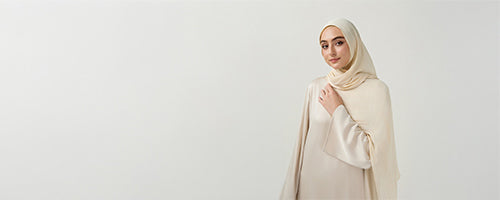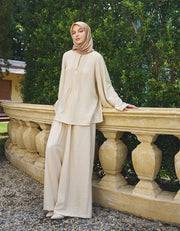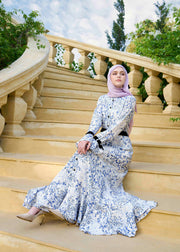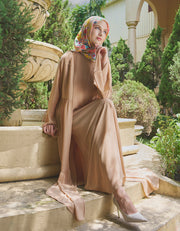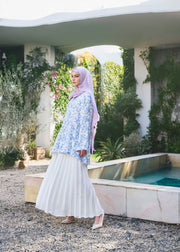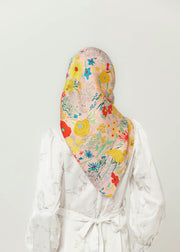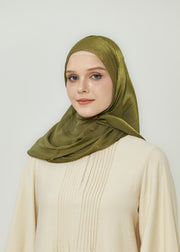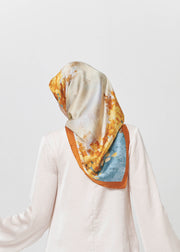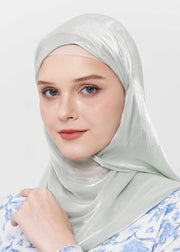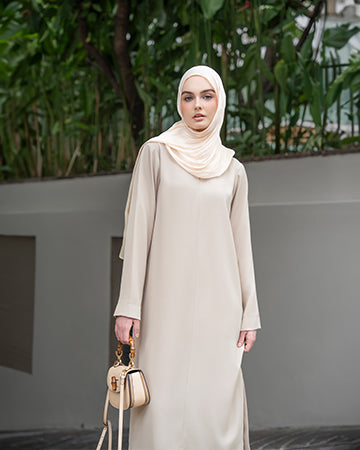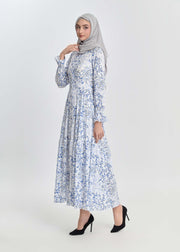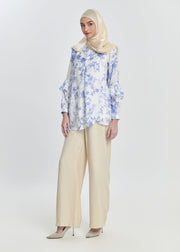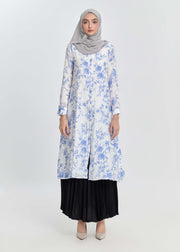Silk and Brocade in Ancient Islamic Garb: Luxurious Islamic Garment Fabrics
When we think about the grandeur of ancient Islamic civilization, fashion plays a powerful role in reflecting cultural refinement. Among the most celebrated aspects were the Islamic garment fabrics, especially silk and brocade, known for their elegance and symbolism. These luxurious materials were more than clothing—they were markers of social identity, artistry, and religious values.
In this article, we explore how silk and brocade shaped ancient Islamic fashion and how their legacy continues to inspire modern modest wear.
The Role of Islamic Garment Fabrics in Cultural Identity
From the Umayyad to the Abbasid periods, Islamic garment fabrics served as key indicators of status, profession, and even piety. The Quran encourages modesty in attire, but modesty did not imply lack of beauty or craftsmanship. On the contrary, Islamic societies embraced high-quality textiles, especially silk and brocade, to exhibit artistic excellence and dignity within the framework of modest fashion.
Fabrics often carried Arabic inscriptions, Quranic verses, or geometric motifs that reinforced spiritual and aesthetic values. These symbols transformed garments into walking art pieces, appreciated not only for their look but for their meaning.
Silk: The Crown Jewel of Ancient Islamic Fashion
Silk was one of the most prized Islamic garment fabrics in ancient times. Introduced via trade with China along the Silk Road, this material quickly became popular among the Muslim elite. The softness, luster, and versatility of silk made it ideal for robes, turbans, veils, and inner linings.
While men were religiously discouraged from wearing pure silk in daily life, women were allowed more freedom with it. However, silk garments were often reserved for special occasions, weddings, or high-ranking individuals like scholars, rulers, and judges.
Some key features of ancient Islamic silk garments include:
-
Tiraz inscriptions: Decorative bands woven or embroidered with royal blessings or Quranic texts
-
Natural dyes: Plant-based dyes gave silk deep hues like indigo, crimson, and gold
-
Layering: Silk was often worn beneath heavier garments to balance elegance and modesty
Silk: The Crown Jewel of Ancient Islamic Fashion
Brocade: The Ornamental Marvel Among Islamic Garment Fabrics
Brocade, a richly decorative fabric woven with metallic threads (often gold or silver), was another favorite in ancient Islamic fashion. Known in Arabic as “zarbaft,” brocade combined textile craftsmanship with visual splendor.
Produced in cities like Baghdad, Damascus, and Cairo, Islamic brocade featured intricate floral patterns, arabesques, and calligraphy. The use of brocade was widespread in:
-
Robes of state
-
Ceremonial cloaks (jubbahs)
-
Kaftans and abayas for elite women
As a major export product, Islamic brocade influenced textiles in Byzantine and European markets. The art of brocade weaving became a form of cultural diplomacy, showcasing the technological and artistic superiority of the Islamic world.
Brocade: The Ornamental Marvel Among Islamic Garment Fabrics
Trade and Spread of Islamic Garment Fabrics
Silk and brocade were not only fashion statements but economic assets. Islamic empires controlled major trade routes—land and sea—that connected China, India, Persia, North Africa, and Europe. As a result, Islamic garment fabrics became globally recognized and desirable.
Notably, the Fatimid Caliphate in Egypt established state-run textile workshops known as "tiraz factories." These were responsible for producing luxury garments for the court and gifts for foreign dignitaries. Similarly, in Al-Andalus (Islamic Spain), cities like Córdoba and Granada became hubs for silk and brocade weaving.
These trade-driven dynamics enabled the evolution of styles. Persian patterns influenced Egyptian weaves; Indian dyes shaped North African textiles—all unified under the aesthetic and modest principles of Islamic fashion.
Religious Contexts Around Islamic Garment Fabrics
Islamic teachings emphasize modesty and humility in clothing, but there was never a rejection of beauty or craftsmanship. In fact, the Prophet Muhammad (peace be upon him) appreciated quality garments and encouraged cleanliness and dignity in appearance.
That said, the use of luxury fabrics like silk and brocade came with religious guidelines:
-
Men were discouraged from pure silk unless necessary (e.g., for skin conditions)
-
Ostentation was frowned upon—luxury was acceptable if it didn’t promote arrogance
-
Charitable giving and social balance were encouraged alongside luxury consumption
This balance between beauty, modesty, and humility defined how Islamic garment fabrics were used in public and private settings.
Influence on Modern Modest Fashion
Today, many designers and brands look to the heritage of Islamic garment fabrics for inspiration. From flowing maxi dresses with silk linings to abayas embroidered with brocade accents, ancient textile traditions continue to influence contemporary modest fashion.
Brocade jackets and silk scarves are now often integrated into wardrobes of modern Muslim women seeking elegance without compromising modesty. With advancements in ethical sourcing and sustainable weaving, today’s textiles also align with Islamic values of responsibility and fairness.
Fashion houses in the Middle East, Southeast Asia, and even Europe increasingly pay homage to historical Islamic styles—proving the timeless appeal of silk and brocade.
Preserving the Legacy of Islamic Textile Art
Museums like the Museum of Islamic Art in Doha and the Victoria & Albert Museum in London house extensive collections of ancient Islamic textile art. These fabrics are not just fashion pieces; they are artifacts that narrate stories of spirituality, trade, identity, and civilization.
Artisans today are reviving traditional weaving techniques, using natural fibers and dyes to recreate authentic Islamic fabrics. Workshops in Turkey, Morocco, and Iran keep the legacy alive, bridging the past with the present.
Conclusion: Islamic Garment Fabrics Then and Now
Silk and brocade were not merely luxurious choices in ancient Islamic fashion—they were embodiments of cultural pride, artistic mastery, and spiritual integrity. As key Islamic garment fabrics, they told stories of empires, artisans, and believers striving to reflect divine beauty through human creation.
In today’s world of modest fashion, these fabrics remain relevant, reminding us that elegance and modesty are not mutually exclusive but beautifully intertwined.
Looking for modern interpretations of traditional Islamic fashion? Discover modest, elegant pieces inspired by heritage textiles at Minnaba — where timeless beauty meets contemporary style.

